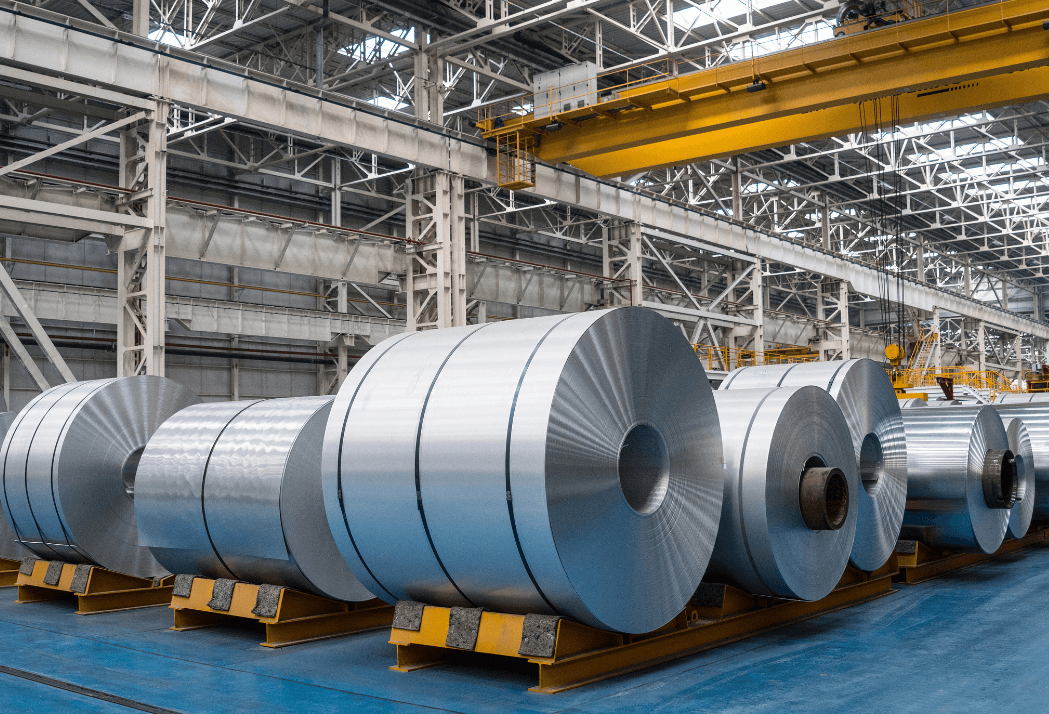U.S. Expands Tariffs on Steel and Aluminum, Igniting Global Trade Tensions

The United States broadened its list of tariffs on Wednesday, implementing sweeping levies on steel and aluminum imports "with no exceptions or exemptions," as previously promised by the White House—despite diplomatic efforts from several countries to avoid the penalties.
President Donald Trump’s decision to impose a 25 percent tariff on both metals is expected to drive up the cost of producing a wide range of goods, from home appliances and vehicles to beverage cans, potentially leading to higher consumer prices in the near future.
“I wouldn’t be surprised if the tariffs quickly translate into higher prices,” said Clark Packard, a research fellow at the Cato Institute, speaking to AFP. He noted that sectors like auto manufacturing and both residential and commercial construction are among the largest consumers of steel in the United States.
In response, the European Commission announced on Wednesday that it will introduce “a series of countermeasures” starting April 1 to address what it called “unjustified trade restrictions” by the U.S.
“We deeply regret this measure,” said European Commission President Ursula von der Leyen. “As the U.S. imposes tariffs worth $28 billion, we are responding with countermeasures of equivalent value in euros.”
Since returning to office, Trump has introduced aggressive tariffs targeting key trading partners including Canada, Mexico, and China, offering only limited relief to neighboring countries while warning of additional levies starting April 2.
The latest tariffs are expected to hit Canada particularly hard. According to EY chief economist Gregory Daco, Canada supplies about half of all U.S. aluminum imports and 20 percent of its steel. Brazil and Mexico are also major suppliers of steel, while the UAE and South Korea are significant sources of aluminum.
These new duties are in addition to earlier tariffs. As a result, certain steel and aluminum products from Canada and Mexico may face combined tariffs as high as 50 percent unless they comply with the US-Mexico-Canada Agreement (USMCA).
The escalating trade tensions have rattled financial markets, contributing to Wall Street's continued decline, with major indexes falling for a second consecutive day on Tuesday.
Still, Trump dismissed concerns over the economy, saying on Tuesday that he did not foresee a downturn and downplaying the market losses.
Trump’s trade approach has been marked by unpredictability. Just a day before the tariffs were enacted, he threatened to double the rate on Canadian steel and aluminum to 50 percent.
In retaliation for previous U.S. tariffs, Ontario had proposed an electricity surcharge targeting three American states, prompting an angry response from Trump. Tensions escalated with Washington and Ottawa exchanging sharp rhetoric, though Ontario ultimately withdrew the surcharge following discussions with U.S. officials.
White House spokesperson Kush Desai said the President was using “the leverage of the American economy” to “deliver a win for the American people.”
A high-level meeting is scheduled for Thursday in Washington between Ontario Premier Doug Ford, U.S. Commerce Secretary Howard Lutnick, and U.S. Trade Representative Jamieson Greer to discuss a revised USMCA ahead of the April 2 deadline for reciprocal tariffs.
Commenting on the President’s shifting positions, White House senior counselor Peter Navarro described the process as “a negotiation.”
“It’s a transition,” he said. “At times, it may be a little bumpy.”
Uncertainty Clouds Business Outlook
Even before the latest tariffs were enforced, manufacturers began scrambling to secure cost-effective domestic suppliers. The mere prospect of protectionist policies has already allowed U.S. steel and aluminum producers to raise prices, said the Cato Institute’s Packard.
“It’s creating massive uncertainty,” he added.
While some U.S. manufacturers welcome the tariffs—saying they boost demand for domestically produced steel—others warn the measures simply inflate import costs while offering no real price advantage for American-made goods.
EY’s Daco also pointed out that the new tariffs go beyond Trump’s 2018 measures by covering a wider range of finished goods in addition to raw materials. With steeper aluminum tariffs and cumulative duties now stacking on previous restrictions, sourcing materials from abroad is likely to become more expensive across multiple industries.
Despite visits from U.S. allies such as Australia and Japan in recent days to plead for exemptions, the latest tariffs took effect without exception.
Australian Prime Minister Anthony Albanese condemned the move as “entirely unjustified,” but said his country would not retaliate.
It remains unclear whether Trump will eventually soften his stance and grant relief to certain countries, as he did during his first term.
Looking ahead, the President has signaled that more reciprocal tariffs could be announced as soon as April 2, targeting what Washington sees as unfair trade practices—potentially affecting even more products and trade partners.
















तपाईको प्रतिक्रिया दिनुहोस